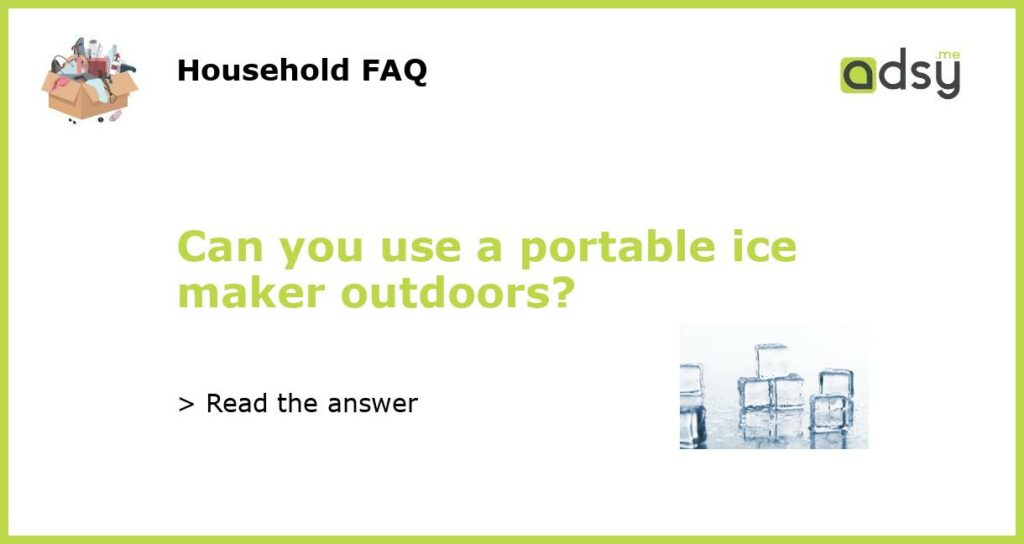Yes, You Can Use a Portable Ice Maker Outdoors
Portable ice makers are a great addition to your outdoor activities, from picnics to camping trips. They are lightweight, easy to transport, and can produce a good amount of ice in a short time. But before taking your portable ice maker outdoors, there are a few things to consider.
Power Source
Most portable ice makers require electricity to function. If you plan to use it outdoors, make sure you have access to an electrical outlet. If not, you can use a generator or battery pack to power the ice maker. Be sure to check the manufacturer’s specifications to ensure that the generator or battery pack can handle the ice maker’s power requirements.
Weather Conditions
Portable ice makers are not designed to withstand extreme weather conditions, such as rain or snow. You should always keep your ice maker in a dry, covered area, such as a tent or canopy, to protect it from the elements.
Water Supply
A portable ice maker requires a water source to produce ice. You can use bottled water or tap water, but make sure it is safe to drink. If you are camping or hiking, you can collect water from a nearby stream or lake. However, you should always filter and purify the water before using it in your ice maker.
Cleaning and Maintenance
It is important to clean and maintain your portable ice maker regularly, especially if you plan to use it outdoors. Follow the manufacturer’s instructions for cleaning and storing your ice maker. Always empty the water reservoir and dry it thoroughly after each use.
Ice Storage
Once your ice maker has produced ice, you need to store it properly. Use an insulated cooler or bag to keep the ice cold. You can also store the ice in a plastic bag or container, but make sure it is airtight to prevent any contamination or melting.






